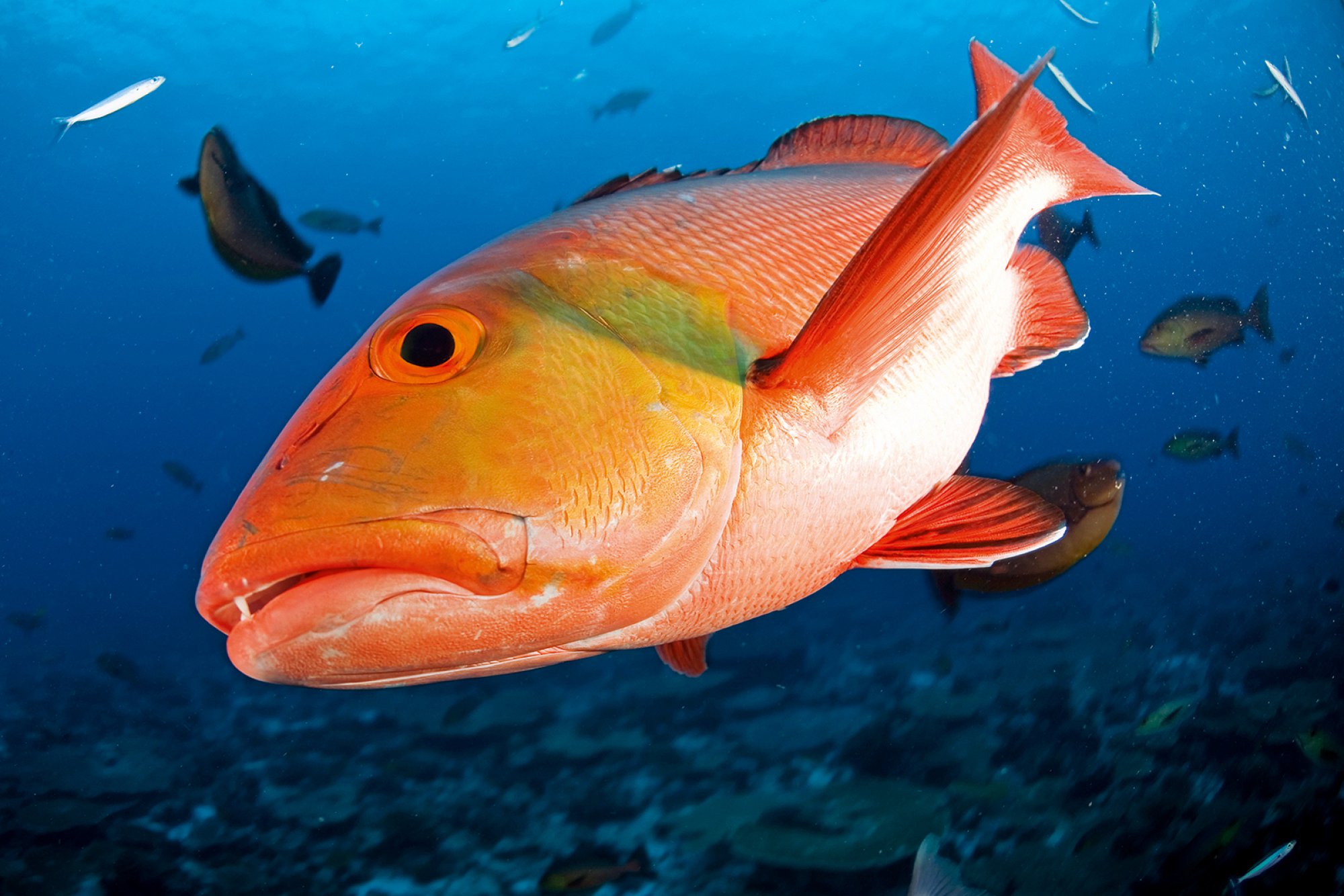Snapper
Abundant, Schooling Reef Fish
Snappers are a popular food fish commonly seen trolling coral reefs and a favorite sighting amongst scuba divers. These colorful, large marine fish include around 113 species within the Lutjanidae family. On menus throughout tropical destinations like the Caribbean, you can find the most popular snapper, the red snapper. The largest snapper, the cubera snapper, grows up to 1.52 m (5 ft) in length.
You can go diving with snappers all over the world in the ocean’s tropical and subtropical regions. These carnivores are usually found in abundance, staying in medium to large-sized schools near coral reefs. They are easily recognizable by their elongated bodies, large mouths, and forked tails growing to an average size of 60-90 cm (2-3 ft). Explore the map below to see where you can go diving with snappers.
Dive Sites with this Animal View more on map

★★★★★ Fenfushi Giri
If you want to see anemones you have to come to this place,, there is a field with hundreds of anemones where we also can always find turtles. The Giri has approx. a diameter of 120m and is easy to dive around. Some nice small overhangs

★★★★★ Aquarium / Lhohifushi Corner
This dive site is located right next to the island. The long reef ends into a corner of the canal. Here you can see several highlights. A very nice dive site for beginners as well as experienced divers.

★★★★☆ Neyo Kanmathi
The reef top has something of a lunar landscape, despite or precisely because of this it is often a very special dive. The northern side often serves as a starting point when the current is draining from a steep wall over a sandy plateau to a normal slope. Manta rays between the end of September and November

★★★★☆ Okobe Thila
This amazing reef are 3 blocks. The biggest begins in the south between 80-100m long and it's full of corals, it would be nice we can start here. In the east we have another wonderful block a bit similar to east block Maya Thila covert full with corals. In the north is the smallest block. AOW or higher

★★★★★ HMNZS Canterbury (Wreck)
The HMNZS Canterbury was decommissioned at the end of March 2005 and was scuttled on 3 November 2007 at Deep Water Cove in the Bay of Islands, making for a great artificial reef wreck dive.

★★★★☆ Kottefaru Kanmathi
A very nice drift dive over several hundred meters along the island of Kottefaru. The top reef is made of hard corals that drop from 4 to 8m, sloping down to 15m, then a wall that drops far more than 30m. On the top reef between June and November the site becomes a cleaning station for mantas.
